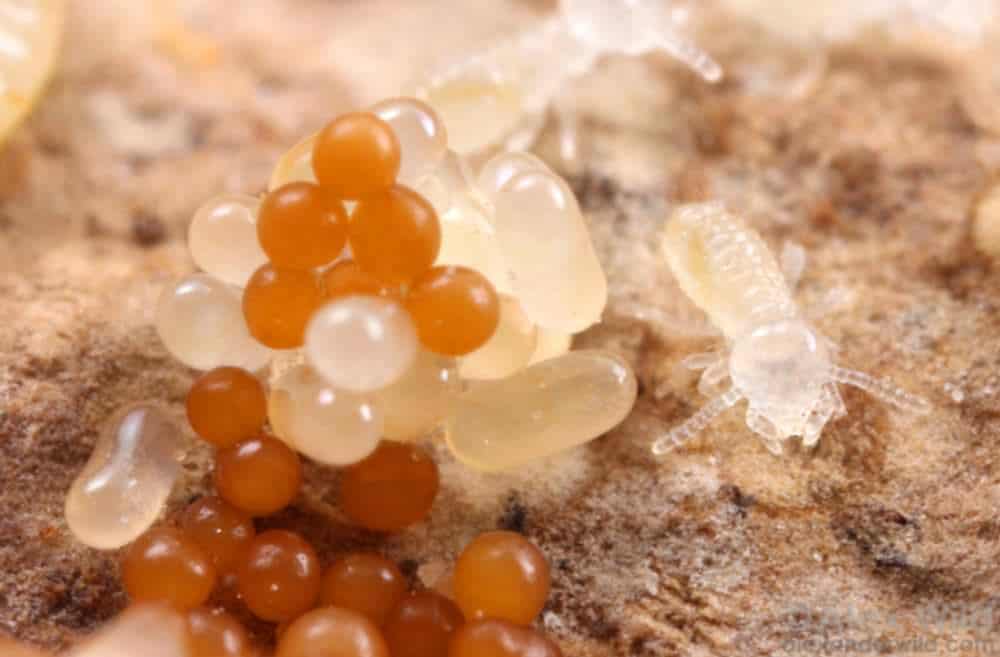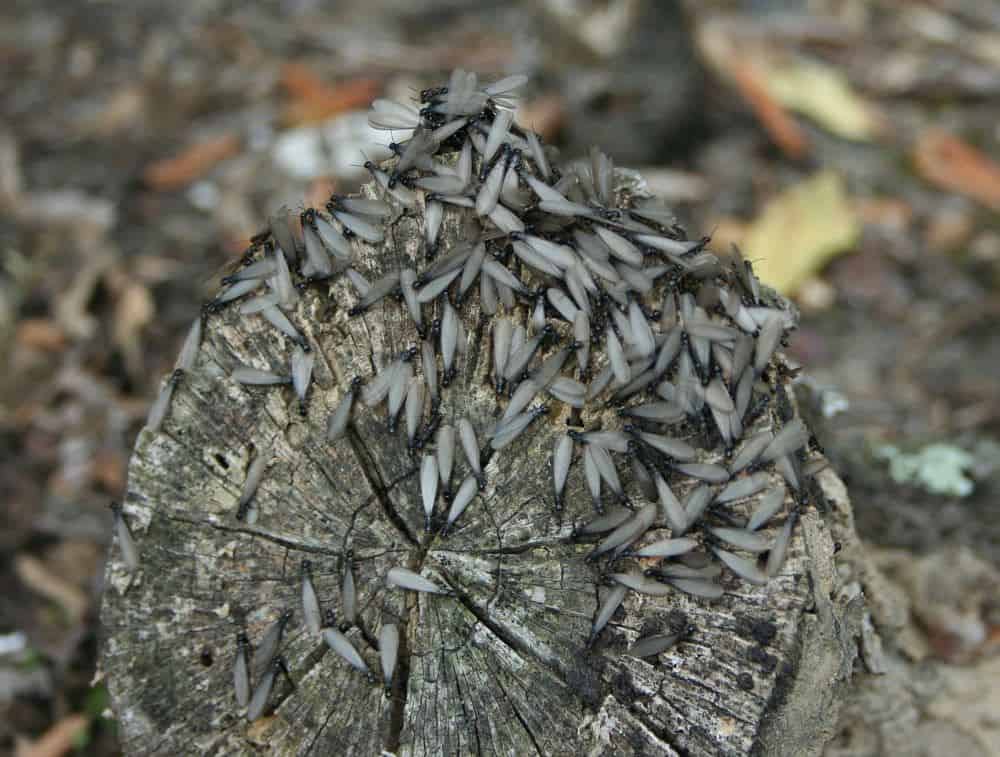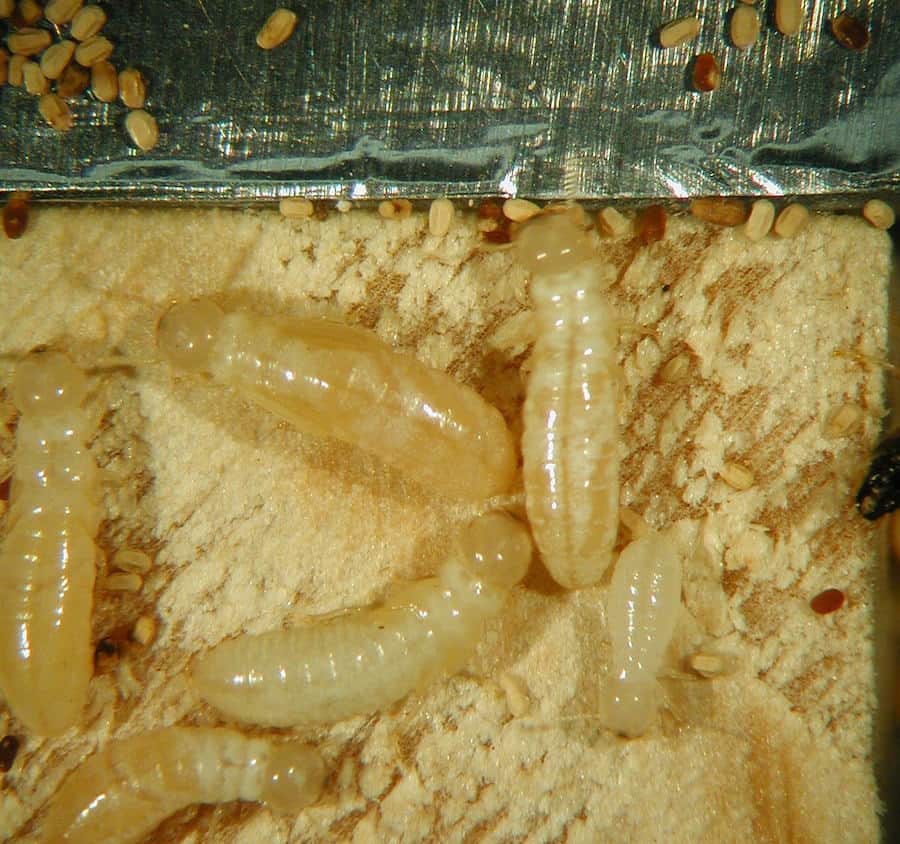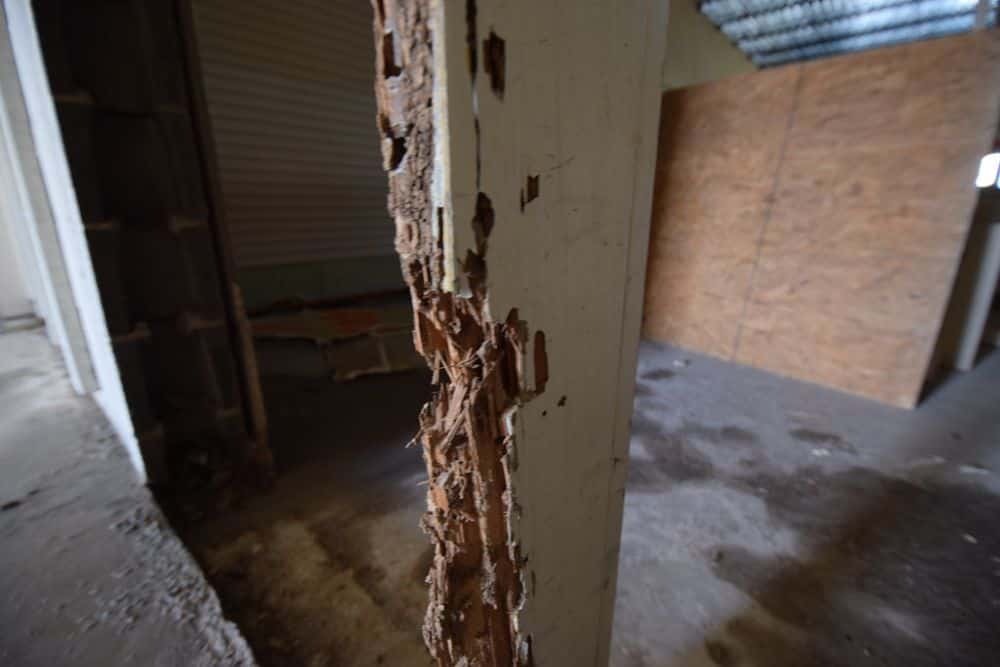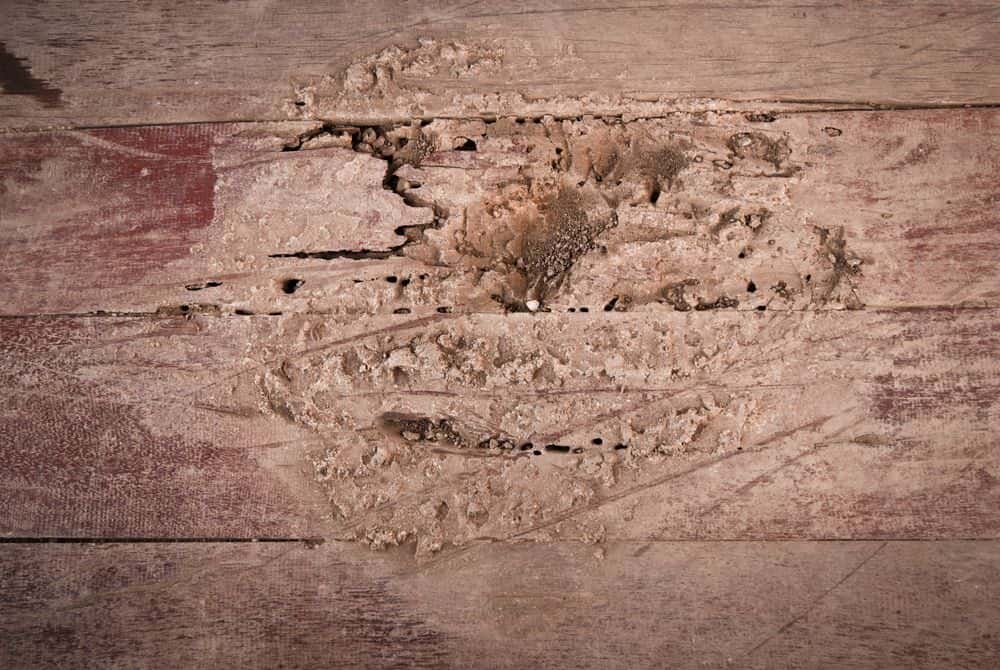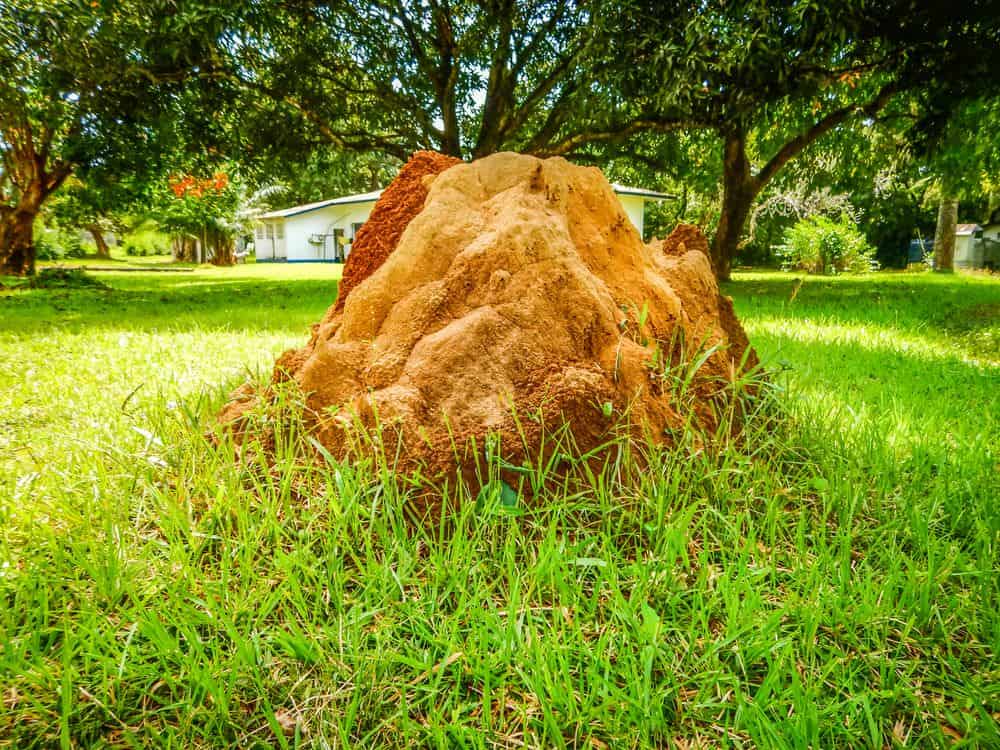Termite Mounds
Termite mounds can be striking structures. However, not all species of termites are capable of building mounds.
In this article, I will explain why termites build mounds, and what these mounds look like. You will also learn what to do if you discover a termite mound.
Why Do Termites Build Mounds?
Not every termite species has the desire, or the ability, to build mounds. Mound-building termite species almost always build nest chambers below ground as well.
Some of the species that we consider to be pests (e.g. drywood termites) prefer to construct their nests in wooden structures rather than in mounds.
Nuisance species belonging to the subterranean termite family construct below-ground nests. Others build what are known as arboreal nests high in trees.
The purpose of a termite mound depends on the species of termite. For example, fungus-growing termites erect mounds for sustenance.
Inside their mounds, termites construct galleries that contain fungus spores. These chambers are continuously maintained by worker termites.
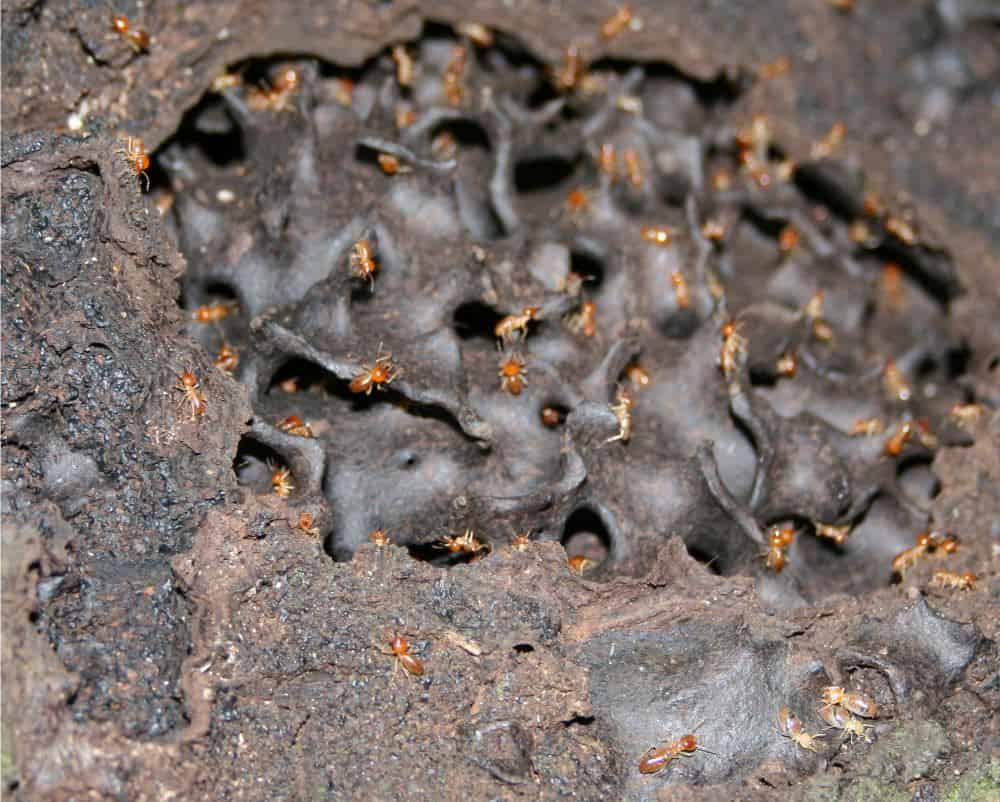
The workers do so through anal excretion of undigested wood they have consumed. This paste is then molded into the galleries, impregnated with fungus spores.
Other species of termite have digestive tracts built to extract nutrients from wood. Fungus-growing termites do not—the fungus does this for them. It converts the cellulose in wood into substances the termites can eat, such as simple sugars.
Through this process, the termites have a constant source of food. Worker termites collect the final product from the chambers and feed other termites in the colony.
Another reason that termites build mounds is to regulate the temperature in hostile climates. The mounds of the termite species, Macrotermes bellicosus, vary in structure, depending on the climate. At higher elevations, their mounds are built low to the ground. This helps keep the nest warmer.
At lower and hotter elevations, mounds built by this same termite species are higher. Taller mounds encourage airflow through the tunnels and galleries within.
For some termite species, termite mounds are essential for gas exchange. Termites inhale oxygen and produce carbon monoxide, as we do.
Termites belonging to the genus Macrotermes have a particularly high metabolic rate. This means that they have a high demand for oxygen. These termites produce similarly large amounts of carbon dioxide.
For the colony to survive, there must be a constant flow of oxygen through the nest. Carbon dioxide waste has to be removed, otherwise, the termites will suffocate.
Mounds can have either closed or open chimneys. These are the holes built into the top of the nest.
If the chimney is open, carbon dioxide is drawn out through natural air-flow. Small holes toward the bottom of the mound allow oxygen to be drawn in.
With closed chimney mounds, shallow tunnels are built throughout the mound. Air flows in and out through thermosiphon ventilation. Warm air is carried toward the top of the nest up to these tunnels. Fresh air is sucked inwards and sinks downwards towards the nest itself.
How Do Termites Build Mounds?
Mound construction differs from species to species. The available materials also impact how the mound is built. For example, mounds built from dryer materials can be built to greater heights.
Regardless of the species, the worker termites are responsible for construction. The workers are the largest social class in any termite colony, outnumbering soldiers and reproductives.
The workers perform all the intensive work for the colony. They feed other caste members and take care of young termites. They are also responsible for nest maintenance and construction.
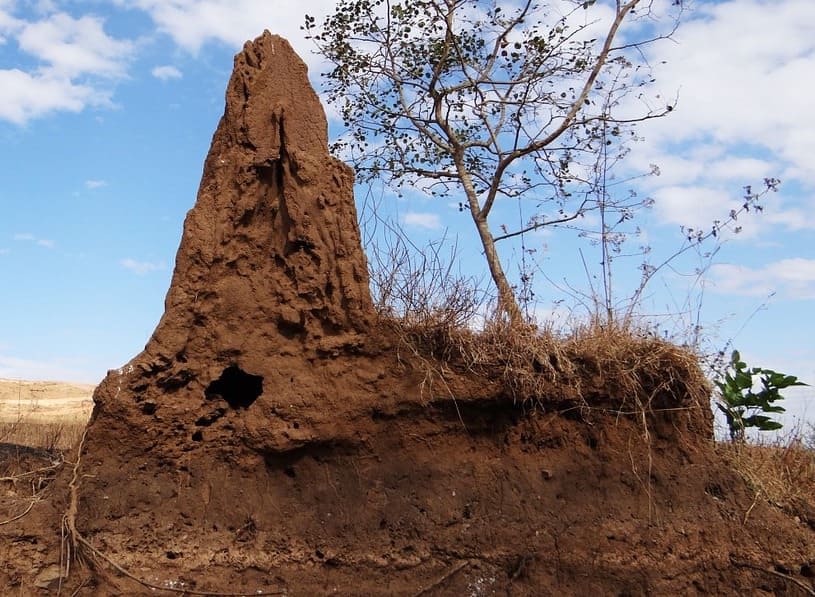
Termite mounds are built by thousands of workers who operate in a synchronized manner. They work as a team to build the mound over time. These termites use what they can find in their environment (e.g. mud), for nest building.
Some types of termite also make use of their own feces to fortify structures. Saliva is always a component of termite mounds. Building materials are transported to the mound in the mouths of the worker termites.
Macrotermes bellicosus termites carry grains of sand mixed with clay particles back to the mound. The termites use the clay as a type of cement around the sand grains. Fungus-growing termites use a mixture of clay and saliva to build their mounds. The result is a substance that is tough and durable.
What Does a Termite Mound Look Like?
A termite mound can be small or large. Distinctive mounds are built by termite species in tropical climates. This includes regions of Africa, Asia, South America, and Australia.
These mounds can appear simplistic from the outside. Inside, they have a complex network of tunnels and chambers.
External Structure
There are several factors affecting a mound’s external appearance. These include the termite species, climate, and materials used.
Keep in mind that the same species of termite can build drastically different mounds. In areas with frequent rainfall, termite mounds can change appearance. Distinctive pinnacles and turrets could be washed away as soon as they are built. Mounds during wet seasons lose their unique features.
Depending on the construction materials used, mounds can vary in color. They can range from a brownish-yellow to a dark red.
Aside from fungus-growing termites, termites belonging to the Macrotermes genus build the largest mounds of all. They can reach heights of 10 to 30 feet.
Macrotermes mounds usually consist of three main segments. The spire is at the top of the mound and makes up most of the height. The base of a mound is what the spire rests on. It is wider than the spire, roughly 16 feet in diameter.
The mound is surrounded by what is known as an outwash pediment. This is soil, clay, or other materials that have begun to erode from the mound’s structure. Outwash pediment can reach a diameter of 30 to 60 feet around the mound.
In dry, hot climates, Macrotermes mounds tend to be built near trees. The trees offer shelter from the sun.
Amitermes meridionalis termites, on the other hand, construct mounds that are shaped like wedges. These can reach sizes of up to 13 feet high and eight feet wide.
Mounds that are being newly built are small and unassuming. They may resemble piles of dirt marked by holes. The holes are the tunnels the termites keep open for nest construction.
Internal Structure
Termite mounds are architecturally diverse structures. The inside of some mounds can be made from different materials than the outside.
For example, the outer walls of some termite mounds are made of hard soil. Deep inside the nest, tunnels and chambers are built from softer materials.
Remember that a termite mound performs many complex functions. There are many networks of tunnels and chambers in termite mounds. Tunnels can be either vertical or horizontal, depending on where they are located.
Termite mounds possess chimneys that can be either open or capped. The chimney runs down the length of the mound and contains many branches. It extends all the way to the underground nest.
The tunnels and chambers built inside the mounds encourage air flow. Termite mounds share some resemblance to the structure of a lung.
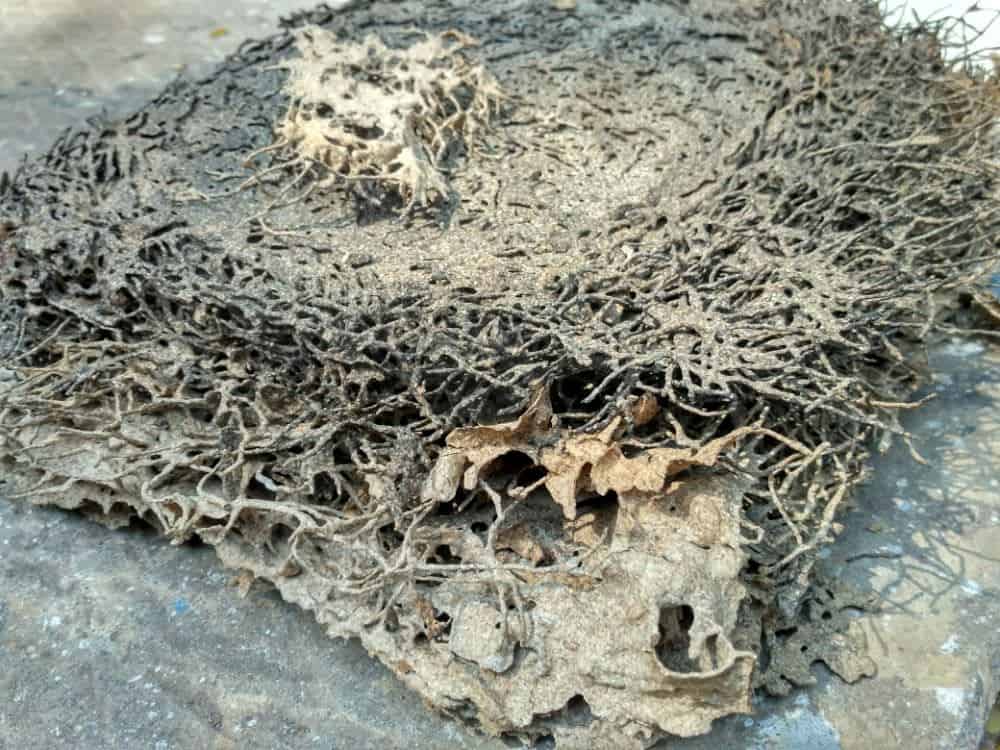
Inside the mound are many surface conduits. They run at a vertical angle, and resemble slender tunnels.
The workers can use egress complexes connected to surface conduits to leave the mound. Egress complexes are small holes that allow workers to leave and forage.
Workers also use these exits to emerge and maintain the outside of the mound.
Surface conduits are connected to paraoecie. These are tunnels inside the part of the nest that is located underground. The paraoecie connect to foraging tunnels.
Fungus-growing termites build sturdy, separated chambers in their mounds. The internal structure of these mounds is similar to a bee honeycomb. However, there is fungus, rather than honey, in each chamber.
What to Do If You Find a Termite Mound
Termite mounds that are built by tropical species are considered a wonder of nature. If you encounter a termite mound out in nature, it is best to leave it alone. The type of termite responsible for building it (e.g. Macrotermes) is likely not a pest species.
Such termite mounds can also house other potentially dangerous guests. Larger mounds can offer shelter to scorpions, snakes, and lizards. Damaging the mound may release more than just termites.
In some African countries, termites are not considered a nuisance. Mushrooms that grow on the mounds of fungi-growing termite mounds are eaten as a delicacy. Termites are ground into feed for chickens or fish bait.
People living in Africa, Australia, or other tropical regions may encounter a mound closer to home. If there is a mound in your yard, you can contact a pest control professional for advice.
If you want to destroy the mound yourself, break it down with a shovel. Apply an insecticide to the remains of the mound and the ground below it. This will kill surviving termites in the nest belowground.
Summary
Not all species of termites are destructive pests. Termites which build large mounds are usually not a danger to human-built structures.
Termite mounds can be fascinating structures to observe. However, if you do discover a mound on your property it is safer to destroy it. You do not want to risk a termite infestation.

